My YOUTUBE video of WASHINGTON


Arlington National Cemetery, in Arlington, Virginia, is a military cemetery in the United States, established during the American Civil War on the grounds of Arlington House, formerly the estate of the family of Robert E. Lee's wife Mary Anna (Custis) Lee, a descendant of Martha Washington. The cemetery is situated directly across the Potomac River from Washington, D.C. and near The Pentagon. It is served by the Arlington Cemetery station on the Blue Line of the Washington Metro system.
Virginia, is a military cemetery in the United States, established during the American Civil War on the grounds of Arlington House, formerly the estate of the family of Robert E. Lee's wife Mary Anna (Custis) Lee, a descendant of Martha Washington. The cemetery is situated directly across the Potomac River from Washington, D.C. and near The Pentagon. It is served by the Arlington Cemetery station on the Blue Line of the Washington Metro system.
More than 290,000 people are buried in an area of 624 acres (2.53 km2). Veterans and military casualties from every one of the nation's wars are interred in the cemetery, from the American Revolution through the military actions in Afghanistan and Iraq. Pre-Civ il War dead were reinterred after 1900.
il War dead were reinterred after 1900.
Arlington shares with Mill Springs National Cemetery, the only other open cemetery in the system, the distinction of being the oldest military burial ground in the United States.
The first soldier to be buried in Arlington was Private William Henry Christman on May 13, 1864.
Arlington National Cemetery and United States Soldiers' and Airmen's Home National Cemetery are administered by the Department of the Army. The other National Cemeteries are administered by the Department of Veterans Affairs or by the National Park Service.
Army. The other National Cemeteries are administered by the Department of Veterans Affairs or by the National Park Service.
Arlington House (Custis-Lee Mansion) and its grounds are administered by the National Park Service as a memorial to Lee.
American military cemeteries developed from the duty of commanders on the frontier and in battle to care for their casualties. When Civil War casualties overflowed hospitals and burial grounds near Washington, D.C., Quartermaster General Montgomery C. Meigs proposed in 1864 that 200 acres (0.81 km2) of the Robert E. Lee family prope rty at Arlington be taken for a cemetery.
rty at Arlington be taken for a cemetery.
"The grounds about the mansion", Meigs wrote, "are admirably adapted to such a use." Burials had in fact begun at Arlington before the ink was even blotted on Meigs's proposal. By war's end, 16,000 graves filled the spaces close to the house.
Custis Lee, heir to the property, sued the government claiming ownership of the land. After the Supreme Court ruled in Lee's favor, Congress paid him $150,000 for title to the land.
Before the Civil War, Robert E. Lee had been a West Point graduate and a United States Army officer. When Fort Sumter was forced to surrender, President Abraham Lincoln offered Lee the command of the Federal army. Lee demurred, because he wanted to see how Virginia would decide.
officer. When Fort Sumter was forced to surrender, President Abraham Lincoln offered Lee the command of the Federal army. Lee demurred, because he wanted to see how Virginia would decide.
When Virginia announced its secession, Lee resigned his commission and took command of the armed forces of the state of Virginia, and later became commander of the Army of Northern Virginia. He quickly established himself as an able commander, defeating a series of Union generals, until his final defeat and surrender at Appomattox Court House.
Because of this decision and subsequent performance, Lee was regarded as disloyal by most Union officers. The decision was made to appropriate his farm as a graveyard for mostly Union dead.
performance, Lee was regarded as disloyal by most Union officers. The decision was made to appropriate his farm as a graveyard for mostly Union dead.
In Arlington National Cemetery, Memorial Day has been celebrated. On May 30, 1968, the first national ceremony for Memorial Day took place in Arlington Nation Cemetery by the President Lyndon B. Johnson.
The Tomb of the Unknowns is part of the Arlington Memorial Amphitheater. The Memorial Amphitheater has hosted state funerals and Memorial Day and Veterans Day ceremonies. Ceremonies are also held for Easter. About 5,000 people attend these holiday ceremonies each year. The structure is mostly built of Imperial Danby marble from Vermont. The Memorial Display room, between the amphitheater and the Tomb of the Unknowns, uses Botticino stone, imported from Italy. The amphitheater was the result of a campaign by Ivory Kimball to construct a place to honor America's soldiers. Congress authorized the structure March 4, 1913. Woodrow Wilson laid the cornerstone for the building on October 15, 1915. The cornerstone contained 15 items including a Bible and a copy of the Constitution.
year. The structure is mostly built of Imperial Danby marble from Vermont. The Memorial Display room, between the amphitheater and the Tomb of the Unknowns, uses Botticino stone, imported from Italy. The amphitheater was the result of a campaign by Ivory Kimball to construct a place to honor America's soldiers. Congress authorized the structure March 4, 1913. Woodrow Wilson laid the cornerstone for the building on October 15, 1915. The cornerstone contained 15 items including a Bible and a copy of the Constitution.
Before the Arlington Memorial Amphitheater was completed in 1921, important ceremonies were held at what is n ow known as the "Old Amphitheater." This structure sits where Robert E. Lee once had his gardens. The amphitheater was built in 1868 under the direction of General John A. Logan. Gen. James Garfield was the featured speaker at the Decoration Day dedication ceremony, May 30, 1868. The amphitheater has an encircling colonnade with a latticed roof that once supported a web of vines. The amphitheater has a marble dais, known as "the rostrum", which is inscribed with the U.S. national motto found on the Great Seal of the United States, E pluribus unum ("Out of many, one"). The amphitheater seats 1,500 people and has hosted speakers such as William Jennings Bryan.
ow known as the "Old Amphitheater." This structure sits where Robert E. Lee once had his gardens. The amphitheater was built in 1868 under the direction of General John A. Logan. Gen. James Garfield was the featured speaker at the Decoration Day dedication ceremony, May 30, 1868. The amphitheater has an encircling colonnade with a latticed roof that once supported a web of vines. The amphitheater has a marble dais, known as "the rostrum", which is inscribed with the U.S. national motto found on the Great Seal of the United States, E pluribus unum ("Out of many, one"). The amphitheater seats 1,500 people and has hosted speakers such as William Jennings Bryan.

Other frequently visited sites in the cemetery are the USMC War Memorial (commonly known as the "Iwo Jima Memorial") and the Netherlands Carillon (these sites are actually located adjacent to the cemetery), and the grave of President John F. Kennedy. Kennedy is buried with his wife and two of their children. He was placed here March 14, 1967. His grave is marked with an eternal flame. His brother, Senator Robert F. Kennedy, is also buried nearby. The latter's grave is marked by a simple cross.
The federal government dedicated a model community for freed slaves, Freedman's Village, near the curr ent Memorial Amphitheater, December 4, 1863. More than 1,100 freed slaves were given land by the government, where they farmed and lived during and after the Civil War. They were turned out in 1890 when the estate was repurchased by the government and dedicated as a military installation.
ent Memorial Amphitheater, December 4, 1863. More than 1,100 freed slaves were given land by the government, where they farmed and lived during and after the Civil War. They were turned out in 1890 when the estate was repurchased by the government and dedicated as a military installation.
Also, in the cemetery, there is a Confederate section with graves of soldiers of the Confederate States of America and a Confederate Memorial.
Near the Tomb of the Unknowns stands a memorial to the 266 men who lost their lives aboard the USS Maine. The memorial is built around a mast salvaged from the Maine's wreckage. (The Maine's other mast is erected at the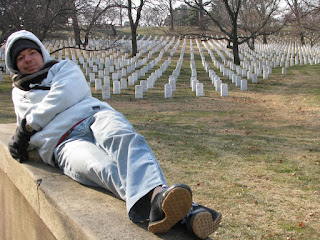 United States Naval Academy, making the Maine the "longest ship in the Navy" in Naval Academy tradition.) The Maine Memorial has served as the temporary resting place for foreign heads of state allied with the United States who died in exile in the United States during the Second World War, pending the return of their remains to their homeland. These were Manuel L. Quezon of the Philippines and Ignacy Jan Paderewski of Poland.
United States Naval Academy, making the Maine the "longest ship in the Navy" in Naval Academy tradition.) The Maine Memorial has served as the temporary resting place for foreign heads of state allied with the United States who died in exile in the United States during the Second World War, pending the return of their remains to their homeland. These were Manuel L. Quezon of the Philippines and Ignacy Jan Paderewski of Poland.
The Tomb of the Unknowns at Arlington National Cemetery is also known as the Tomb of the Unknown Soldier. It stands on top of a hill overlooking Washington, D.C.
One of the more popular sites at the Cemetery, the tomb is made from Yule marble quarried in Colorado. It consists of seven pieces, with a total weight of 79 short tons (72 metric tons). The tomb was completed and opened to the public April 9, 1932, at a cost of $48,000.
marble quarried in Colorado. It consists of seven pieces, with a total weight of 79 short tons (72 metric tons). The tomb was completed and opened to the public April 9, 1932, at a cost of $48,000.
It was initially named the "Tomb of the Unknown Soldier." Other unknown servicemen were later entombed there, and it became known as the "Tomb of the Unknowns", though it has never been officially named. The soldiers entombed there are:
Unknown Soldier of World War I, interred November 11, 1921. President Warren G. Harding presided.
Unknown Soldier of World War II, interred May 30, 1958. President Dwight D. Eisenhower presided.
presided.
Unknown Soldier of the Korean War, also interred May 30, 1958. President Dwight Eisenhower presided again, Vice President Richard Nixon acted as next of kin.
Unknown Soldier of the Vietnam War, interred May 28, 1984. President Ronald Reagan presided. The remains of the Vietnam Unknown were disinterred, under the authority of President Bill Clinton, on May 14, 1998, and were identified as those of Air Force 1st Lt. Michael J. Blassie, whose family had him reinterred near their home in St. Louis, Missouri. It has been determined that the crypt at the Tomb of the Unknowns that contained the remains of the Vietnam Unknown will remain empty.
The Tomb of the Unknowns is perpetually guarded by the U.S. Army. The 3rd U.S. Infantry Regiment ("The Old Guard") began guarding the Tomb April 6, 1948.
January 2009


Arlington National Cemetery, in Arlington,
 Virginia, is a military cemetery in the United States, established during the American Civil War on the grounds of Arlington House, formerly the estate of the family of Robert E. Lee's wife Mary Anna (Custis) Lee, a descendant of Martha Washington. The cemetery is situated directly across the Potomac River from Washington, D.C. and near The Pentagon. It is served by the Arlington Cemetery station on the Blue Line of the Washington Metro system.
Virginia, is a military cemetery in the United States, established during the American Civil War on the grounds of Arlington House, formerly the estate of the family of Robert E. Lee's wife Mary Anna (Custis) Lee, a descendant of Martha Washington. The cemetery is situated directly across the Potomac River from Washington, D.C. and near The Pentagon. It is served by the Arlington Cemetery station on the Blue Line of the Washington Metro system.More than 290,000 people are buried in an area of 624 acres (2.53 km2). Veterans and military casualties from every one of the nation's wars are interred in the cemetery, from the American Revolution through the military actions in Afghanistan and Iraq. Pre-Civ
 il War dead were reinterred after 1900.
il War dead were reinterred after 1900.Arlington shares with Mill Springs National Cemetery, the only other open cemetery in the system, the distinction of being the oldest military burial ground in the United States.
The first soldier to be buried in Arlington was Private William Henry Christman on May 13, 1864.
Arlington National Cemetery and United States Soldiers' and Airmen's Home National Cemetery are administered by the Department of the
 Army. The other National Cemeteries are administered by the Department of Veterans Affairs or by the National Park Service.
Army. The other National Cemeteries are administered by the Department of Veterans Affairs or by the National Park Service.Arlington House (Custis-Lee Mansion) and its grounds are administered by the National Park Service as a memorial to Lee.
American military cemeteries developed from the duty of commanders on the frontier and in battle to care for their casualties. When Civil War casualties overflowed hospitals and burial grounds near Washington, D.C., Quartermaster General Montgomery C. Meigs proposed in 1864 that 200 acres (0.81 km2) of the Robert E. Lee family prope
 rty at Arlington be taken for a cemetery.
rty at Arlington be taken for a cemetery."The grounds about the mansion", Meigs wrote, "are admirably adapted to such a use." Burials had in fact begun at Arlington before the ink was even blotted on Meigs's proposal. By war's end, 16,000 graves filled the spaces close to the house.
Custis Lee, heir to the property, sued the government claiming ownership of the land. After the Supreme Court ruled in Lee's favor, Congress paid him $150,000 for title to the land.
Before the Civil War, Robert E. Lee had been a West Point graduate and a United States Army
 officer. When Fort Sumter was forced to surrender, President Abraham Lincoln offered Lee the command of the Federal army. Lee demurred, because he wanted to see how Virginia would decide.
officer. When Fort Sumter was forced to surrender, President Abraham Lincoln offered Lee the command of the Federal army. Lee demurred, because he wanted to see how Virginia would decide.When Virginia announced its secession, Lee resigned his commission and took command of the armed forces of the state of Virginia, and later became commander of the Army of Northern Virginia. He quickly established himself as an able commander, defeating a series of Union generals, until his final defeat and surrender at Appomattox Court House.
Because of this decision and subsequent
 performance, Lee was regarded as disloyal by most Union officers. The decision was made to appropriate his farm as a graveyard for mostly Union dead.
performance, Lee was regarded as disloyal by most Union officers. The decision was made to appropriate his farm as a graveyard for mostly Union dead.In Arlington National Cemetery, Memorial Day has been celebrated. On May 30, 1968, the first national ceremony for Memorial Day took place in Arlington Nation Cemetery by the President Lyndon B. Johnson.
The Tomb of the Unknowns is part of the Arlington Memorial Amphitheater. The Memorial Amphitheater has hosted state funerals and Memorial Day and Veterans Day ceremonies. Ceremonies are also held for Easter. About 5,000 people attend these holiday ceremonies each
 year. The structure is mostly built of Imperial Danby marble from Vermont. The Memorial Display room, between the amphitheater and the Tomb of the Unknowns, uses Botticino stone, imported from Italy. The amphitheater was the result of a campaign by Ivory Kimball to construct a place to honor America's soldiers. Congress authorized the structure March 4, 1913. Woodrow Wilson laid the cornerstone for the building on October 15, 1915. The cornerstone contained 15 items including a Bible and a copy of the Constitution.
year. The structure is mostly built of Imperial Danby marble from Vermont. The Memorial Display room, between the amphitheater and the Tomb of the Unknowns, uses Botticino stone, imported from Italy. The amphitheater was the result of a campaign by Ivory Kimball to construct a place to honor America's soldiers. Congress authorized the structure March 4, 1913. Woodrow Wilson laid the cornerstone for the building on October 15, 1915. The cornerstone contained 15 items including a Bible and a copy of the Constitution.Before the Arlington Memorial Amphitheater was completed in 1921, important ceremonies were held at what is n
 ow known as the "Old Amphitheater." This structure sits where Robert E. Lee once had his gardens. The amphitheater was built in 1868 under the direction of General John A. Logan. Gen. James Garfield was the featured speaker at the Decoration Day dedication ceremony, May 30, 1868. The amphitheater has an encircling colonnade with a latticed roof that once supported a web of vines. The amphitheater has a marble dais, known as "the rostrum", which is inscribed with the U.S. national motto found on the Great Seal of the United States, E pluribus unum ("Out of many, one"). The amphitheater seats 1,500 people and has hosted speakers such as William Jennings Bryan.
ow known as the "Old Amphitheater." This structure sits where Robert E. Lee once had his gardens. The amphitheater was built in 1868 under the direction of General John A. Logan. Gen. James Garfield was the featured speaker at the Decoration Day dedication ceremony, May 30, 1868. The amphitheater has an encircling colonnade with a latticed roof that once supported a web of vines. The amphitheater has a marble dais, known as "the rostrum", which is inscribed with the U.S. national motto found on the Great Seal of the United States, E pluribus unum ("Out of many, one"). The amphitheater seats 1,500 people and has hosted speakers such as William Jennings Bryan.
Other frequently visited sites in the cemetery are the USMC War Memorial (commonly known as the "Iwo Jima Memorial") and the Netherlands Carillon (these sites are actually located adjacent to the cemetery), and the grave of President John F. Kennedy. Kennedy is buried with his wife and two of their children. He was placed here March 14, 1967. His grave is marked with an eternal flame. His brother, Senator Robert F. Kennedy, is also buried nearby. The latter's grave is marked by a simple cross.
The federal government dedicated a model community for freed slaves, Freedman's Village, near the curr
 ent Memorial Amphitheater, December 4, 1863. More than 1,100 freed slaves were given land by the government, where they farmed and lived during and after the Civil War. They were turned out in 1890 when the estate was repurchased by the government and dedicated as a military installation.
ent Memorial Amphitheater, December 4, 1863. More than 1,100 freed slaves were given land by the government, where they farmed and lived during and after the Civil War. They were turned out in 1890 when the estate was repurchased by the government and dedicated as a military installation.Also, in the cemetery, there is a Confederate section with graves of soldiers of the Confederate States of America and a Confederate Memorial.
Near the Tomb of the Unknowns stands a memorial to the 266 men who lost their lives aboard the USS Maine. The memorial is built around a mast salvaged from the Maine's wreckage. (The Maine's other mast is erected at the
 United States Naval Academy, making the Maine the "longest ship in the Navy" in Naval Academy tradition.) The Maine Memorial has served as the temporary resting place for foreign heads of state allied with the United States who died in exile in the United States during the Second World War, pending the return of their remains to their homeland. These were Manuel L. Quezon of the Philippines and Ignacy Jan Paderewski of Poland.
United States Naval Academy, making the Maine the "longest ship in the Navy" in Naval Academy tradition.) The Maine Memorial has served as the temporary resting place for foreign heads of state allied with the United States who died in exile in the United States during the Second World War, pending the return of their remains to their homeland. These were Manuel L. Quezon of the Philippines and Ignacy Jan Paderewski of Poland.The Tomb of the Unknowns at Arlington National Cemetery is also known as the Tomb of the Unknown Soldier. It stands on top of a hill overlooking Washington, D.C.
One of the more popular sites at the Cemetery, the tomb is made from Yule
 marble quarried in Colorado. It consists of seven pieces, with a total weight of 79 short tons (72 metric tons). The tomb was completed and opened to the public April 9, 1932, at a cost of $48,000.
marble quarried in Colorado. It consists of seven pieces, with a total weight of 79 short tons (72 metric tons). The tomb was completed and opened to the public April 9, 1932, at a cost of $48,000.It was initially named the "Tomb of the Unknown Soldier." Other unknown servicemen were later entombed there, and it became known as the "Tomb of the Unknowns", though it has never been officially named. The soldiers entombed there are:
Unknown Soldier of World War I, interred November 11, 1921. President Warren G. Harding presided.
Unknown Soldier of World War II, interred May 30, 1958. President Dwight D. Eisenhower
 presided.
presided.Unknown Soldier of the Korean War, also interred May 30, 1958. President Dwight Eisenhower presided again, Vice President Richard Nixon acted as next of kin.
Unknown Soldier of the Vietnam War, interred May 28, 1984. President Ronald Reagan presided. The remains of the Vietnam Unknown were disinterred, under the authority of President Bill Clinton, on May 14, 1998, and were identified as those of Air Force 1st Lt. Michael J. Blassie, whose family had him reinterred near their home in St. Louis, Missouri. It has been determined that the crypt at the Tomb of the Unknowns that contained the remains of the Vietnam Unknown will remain empty.
The Tomb of the Unknowns is perpetually guarded by the U.S. Army. The 3rd U.S. Infantry Regiment ("The Old Guard") began guarding the Tomb April 6, 1948.
January 2009






































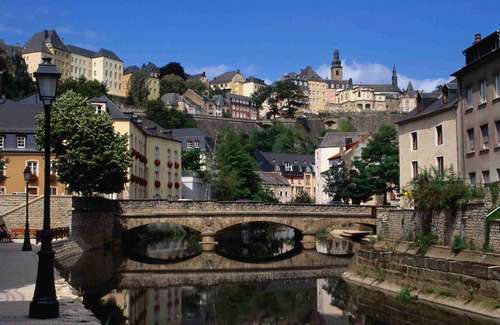



















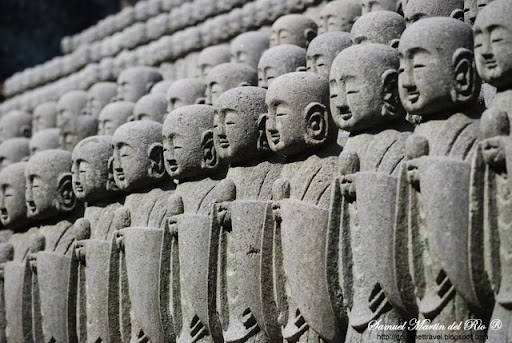











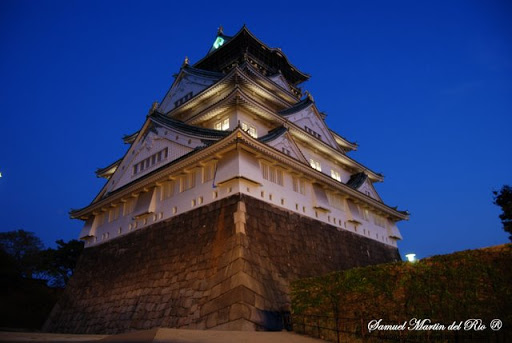
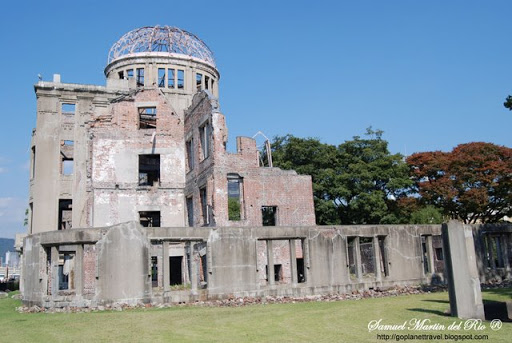







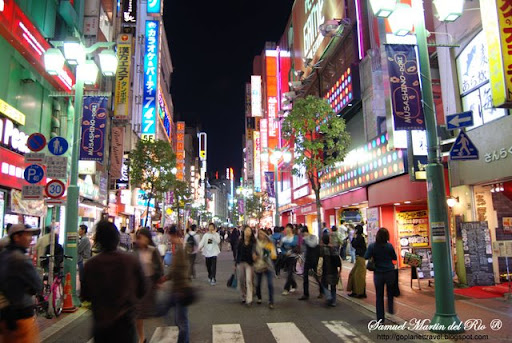



















No comments:
Post a Comment